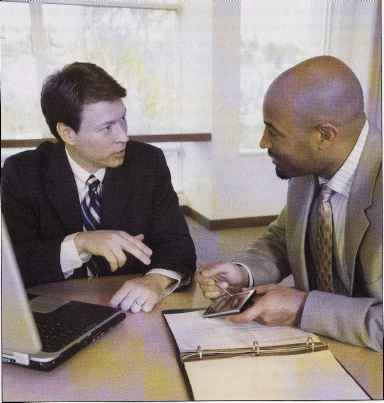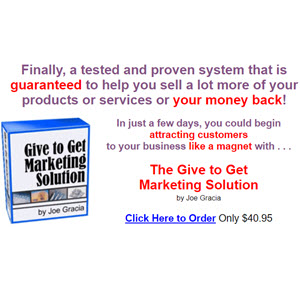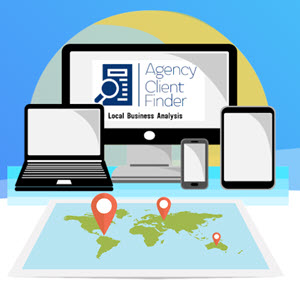The Nature of Each Promotion Tool
Each promotion tool has unique characteristics and costs. Marketers must understand these characteristics in shaping the promotion mix.
Advertising. Advertising can reach masses of geographically dispersed buyers at a low cost per exposure, and it enables the seller to repeat a message many times. For example, television advertising can reach huge audiences. An estimated 97.5 million Americans tuned in to watch the most recent Super Bowl (America's championship football game), about 32 million people watched at least part of the last Academy Awards broadcast, and 33.4 million fans tuned in to watch the debut episode of the fourth season of the reality show American Idol. For companies that want to reach a mass audience, TV is the place to be.18
Competitive-parity method
Setting the promotion budget to match competitors' outlays.
Objective-and-task method
Developing the promotion budget by
(1) defining specific objectives,
(2) determining the tasks that must be performed to achieve these objectives, and (3) estimating the costs of performing these tasks. The sum of these costs is the proposed promotion budget.
Beyond its reach, large-scale advertising says something positive about the seller's size, popularity, and success. Because of advertising's public nature, consumers tend to view advertised products as more legitimate. Advertising is also very expressive—it allows the company to dramatize its products through the artful use of visuals, print, sound, and color. On the one hand, advertising can be used to build up a long-term image for a product (such as Coca-Cola ads). On the other hand, advertising can trigger quick sales (as when a department store advertises weekend specials).
Advertising also has some shortcomings. Although it reaches many people quickly, advertising is impersonal and cannot be as directly persuasive as can company salespeople. For the most part, advertising can carry on only a one-way communication with the audience, and the audience does not feel that it has to pay attention or respond. In addition, advertising can be very costly. Although some advertising forms, such as newspaper and radio advertising, can be done on smaller budgets, other forms, such as network TV advertising, require very large budgets.
Personal Selling. Personal selling is the most effective tool at certain stages of the buying process, particularly in building up buyers' preferences, convictions, and actions. It involves personal interaction between two or more people, so each person can observe the other's needs and characteristics and make quick adjustments. Personal selling also allows all kinds of customer relationships to spring up, ranging from matter-of-fact selling relationships to personal friendships. An effective salesperson keeps the customer's interests at heart in order to build a long-term relationship by solving customer problems. AFinally, with personal selling, the buyer usually feels a greater need to listen and respond, even if the response is a polite "No thank you."
These unique qualities come at a cost, however. A sales force requires a longer-term commitment than does advertising—advertising can be turned on and off, but sales force size is harder to change. Personal selling is also the company's most expensive promotion tool, costing companies $329 on average per sales call. In some industries, the average cost of a sales call reaches $452." Firms often spend up to three times as much on personal selling as they do on advertising.
Sales Promotion. Sales promotion includes a wide assortment of tools—coupons, contests, cents-off deals, premiums, and others—all of which have many unique qualities. They attract consumer attention, offer strong incentives to purchase, and can be used to dramatize product offers and to boost sagging sales. Sales promotions invite and reward quick response—whereas advertising says, "Buy our product," sales promotion says, "Buy it now." Sales promotion effects are often shortlived, however, and often are not as effective as advertising or personal selling in building long-run brand preference and customer relationships.
Public Relations. Public relations is very believable— news stories, features, sponsorships, and events seem more real and believable to readers than ads do. Public relations can also reach many prospects who avoid salespeople and advertisements—the message gets to the buyers as "news" rather than as a sales-directed communication. And, as with advertising, public relations can dramatize a company or product. Marketers tend to underuse public relations or to use it as an

A With personal selling, the customer feels a greater need to listen and respond, even if the response is a polite "no thank you."
Push strategy
A promotion strategy that calls for using the sales force and trade promotion to push the product through channels. The producer promotes the product to channel members who in turn promote it to final consumers.
Pull strategy
A promotion strategy that calls for spending a lot on advertising and consumer promotion to induce final consumers to buy the product, creating a demand vacuum that "pulls" the product through the channel.
afterthought. Yet a well-thought-out public relations campaign used with other promotion mix elements can be very effective and economical.
Direct Marketing. Although there are many forms of direct marketing—direct mail and catalogs, telephone marketing, online marketing, and others—they all share four distinctive characteristics. Direct marketing is less public: The message is normally directed to a specific person. Direct marketing is immediate and customized: Messages can be prepared very quickly and can be tailored to appeal to specific consumers. Finally, direct marketing is interactive: It allows a dialogue between the marketing team and the consumer, and messages can be altered depending on the consumer's response. Thus, direct marketing is well suited to highly targeted marketing efforts and to building one-to-one customer relationships.
Continue reading here: Promotion Mix Strategies
Was this article helpful?
Readers' Questions
-
Myrtle1 month ago
- Reply
-
Nile8 months ago
- Reply
-
sophie1 year ago
- Reply
-
erling1 year ago
- Reply
-
Debi Bryant1 year ago
- Reply
-
kaija1 year ago
- Reply
-
alison1 year ago
- Reply

